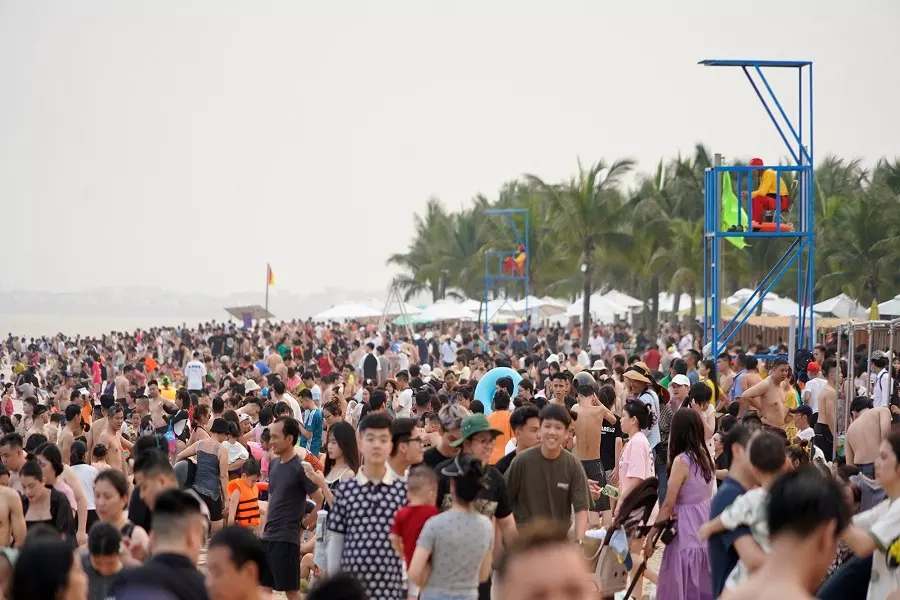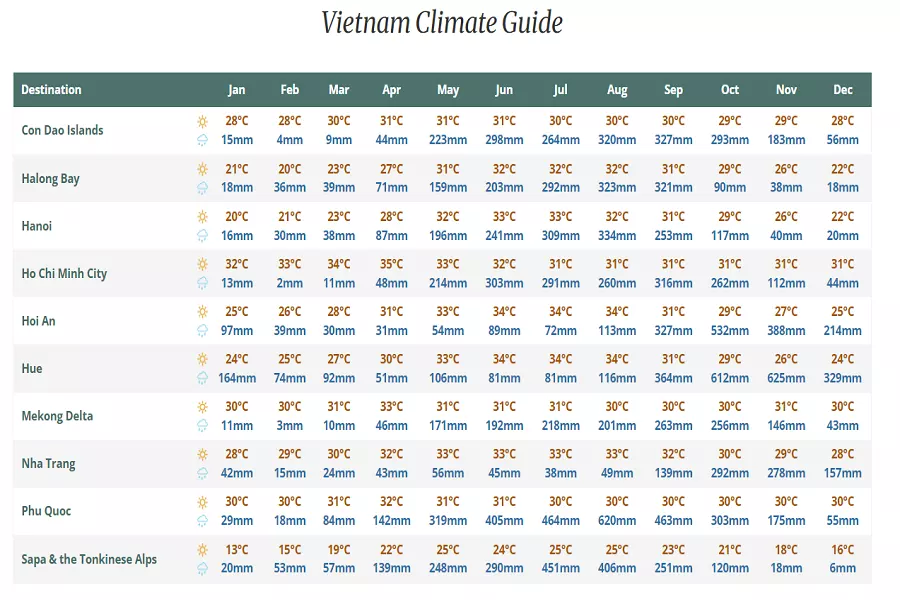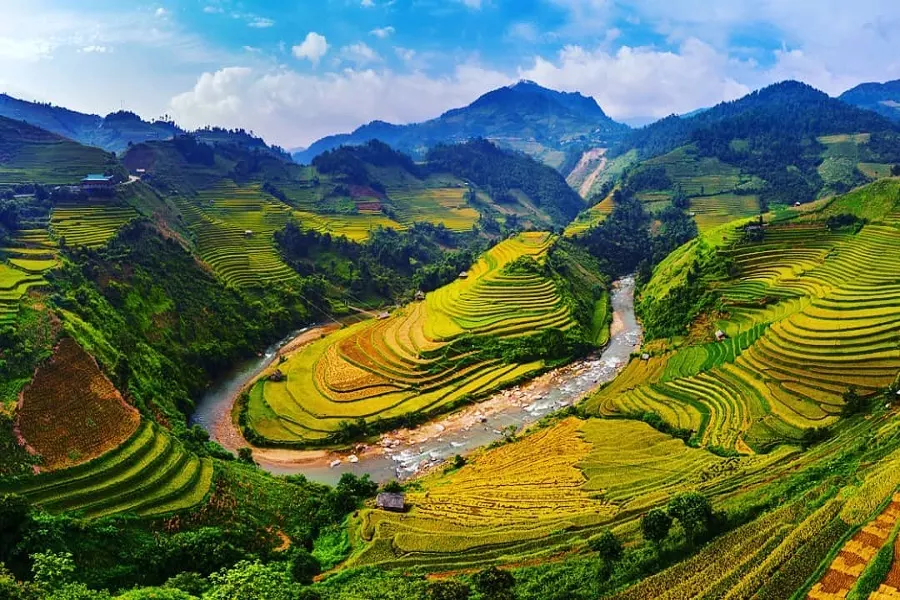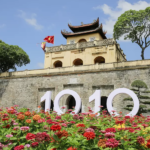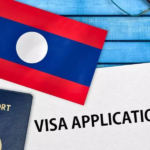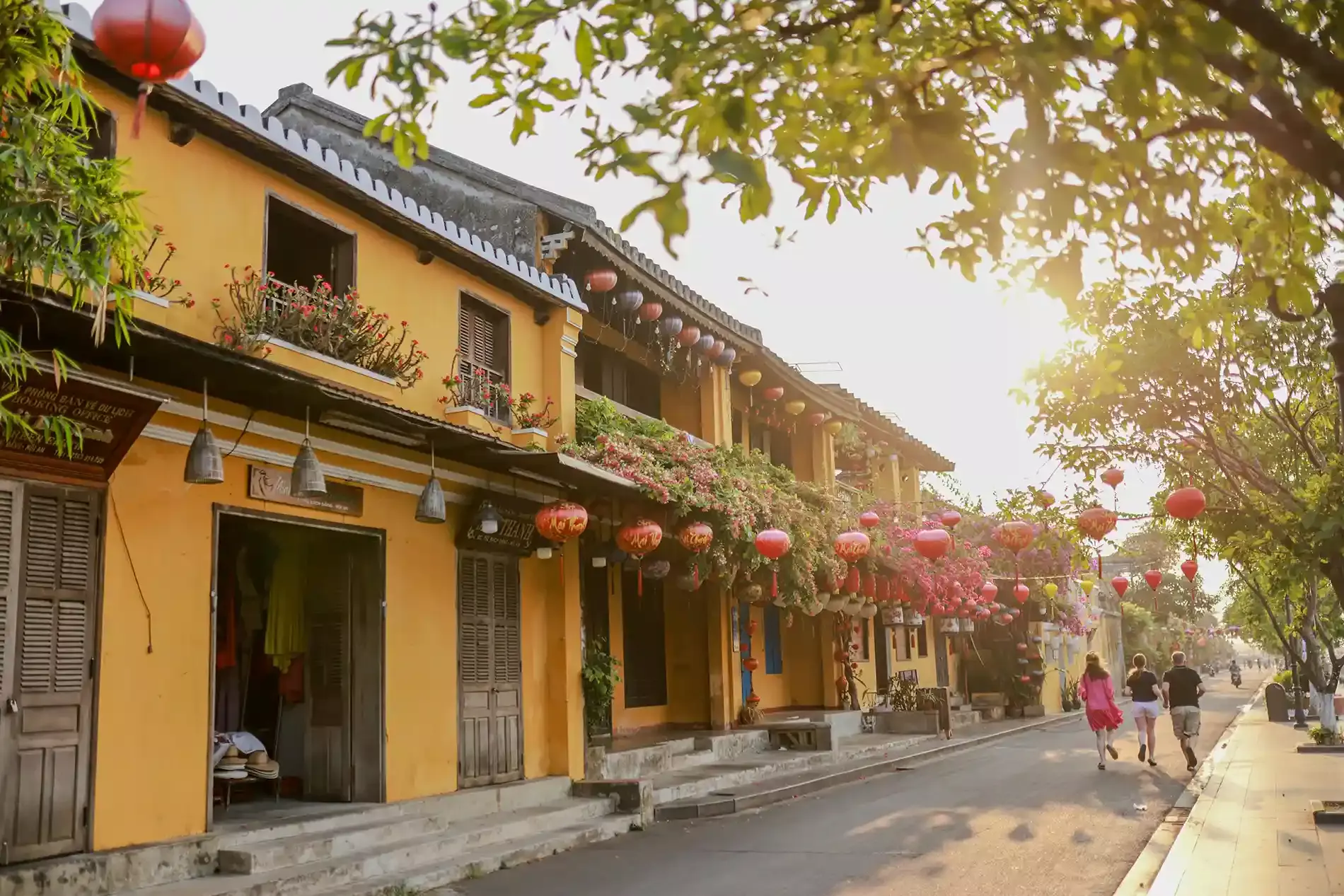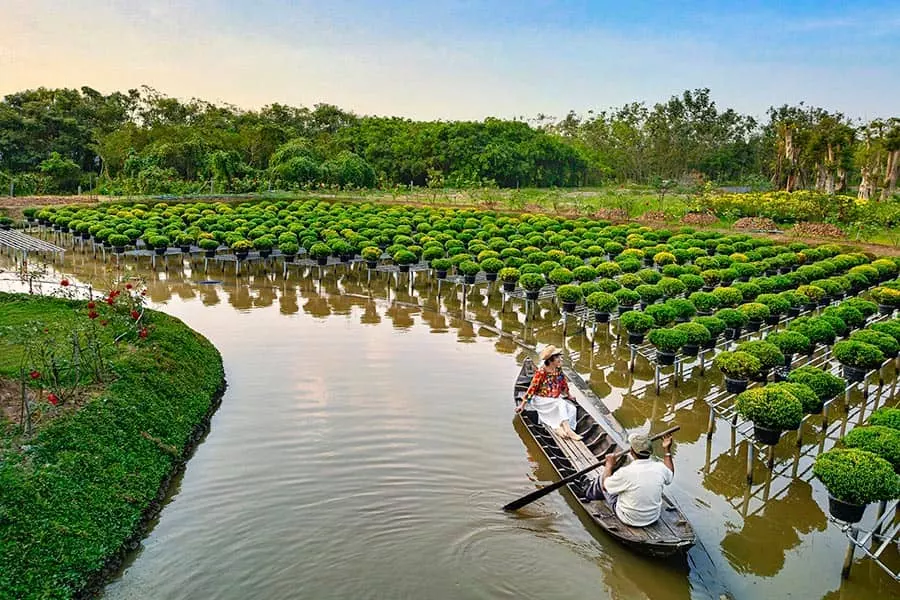
Weather in Vietnam: what should you know before traveling
When planning a trip to Vietnam, understanding its unique and diverse weather patterns is crucial. Vietnam is known for its stunning landscapes, bustling cities, and rich culture. But to fully enjoy these experiences, it’s important to know what the weather will be like at different times of the year and in various regions. Vietnam’s weather can drastically affect your travel plans, from which cities to visit to what activities are possible.
In this guide, we’ll provide you with everything you need to know about weather in Vietnam to plan the perfect trip.
Table des matières de l'article
Vietnam weather overview
Vietnam’s unique geography, stretching over 1,000 miles (1,650 kilometers) from north to south, offers a fascinating variety of climates and landscapes that change significantly across its regions. This diversity is a key factor for travelers, as it influences not only when to visit but also what experiences to expect in different parts of the country.
Northern Vietnam
In the north, the climate is influenced by the subtropical highlands, leading to distinct seasons. Winters, from December to February, can be surprisingly cold, especially in mountainous areas like Sapa, where temperatures occasionally dip below freezing. The summer months, from May to September, are hot and humid, with plenty of rain, making the landscape lush and green. The spring (March to April) and autumn (September to October) are ideal times to visit, with milder temperatures and clearer skies, perfect for exploring the historical capital, Hanoi, or the UNESCO-listed Halong Bay.
Central Vietnam
Central Vietnam, home to cities like Hue, Da Nang, and Hoi An, has a more complex weather pattern due to its coastal location. Summers (from May to September) are long, hot, and relatively dry, making it ideal for beachgoers. However, from October to November, the region experiences heavy rainfall and occasional typhoons. This part of Vietnam is known for its long stretches of sandy beaches and historical sites like the ancient town of Hoi An and the Imperial City of Hue. The best time to visit is often in the spring or early summer when the weather is more predictable.
Southern Vietnam
In the south, including the vibrant metropolis of Ho Chi Minh City (Saigon) and the Mekong Delta, the weather is consistently tropical, with just two main seasons: wet and dry. The dry season runs from November to April, characterized by hot and humid days, but with little to no rain, making it a popular time to explore. The wet season, from May to October, brings daily afternoon downpours, which can be refreshing but may disrupt outdoor activities. Despite the rains, this period also offers the opportunity to experience the lush, green landscapes of the Mekong Delta at their peak.
The best time to visit Vietnam
So, when is the best time to visit Vietnam? It all depends on your travel goals and the regions you want to explore. The best time to visit Vietnam for comfortable weather and fewer disruptions is during the spring (March to April) and autumn (September to November). These months offer mild temperatures and less rainfall, perfect for sightseeing, trekking, and beach activities.
However, if you’re looking for experience in Vietnam’s famous beaches, visiting during the off-season (May to September) might be a good idea, especially if you’re planning to explore areas less affected by the summer monsoon.
You may also need to know when is the high tourist season…
# High Season (October to April): This is the peak tourist season for foreign visitors to Vietnam, particularly in the north of Vietnam. The weather is cool and dry, attracting travelers looking to escape the heat of summer in their home countries.
# Low Season (May to September): The summer months are considered the low season, especially in the southern and central regions where temperatures can soar, and heavy rains are frequent. This is also the best time to find deals and explore areas like Sapa, where the weather is cooler. However, this is the peak season for domestic tourism because students are on summer vacation along with 2 major Vietnamese holidays (April 30 – May 1 and National Day September 2).
Beaches in Ha Long are often overcrowded on holidays. Source: Vietnamnet
Weather in Vietnam by month: where should you go?
To help plan your trip, here’s a breakdown of Vietnam weather by month, along with recommended destinations.
January – February
North Vietnam (Hanoi, Sapa, Ha Giang): Cool and dry with average temperatures ranging from 10°C to 20°C (50°F-68°F). It can be chilly in the mountains like Sapa, with occasional frost.
Central Vietnam (Da Nang, Hoi An, Hue): Mostly dry and mild, with temperatures around 18°C to 25°C (64°F-77°F).
South Vietnam (Ho Chi Minh City, Mekong Delta, Phu Quoc): Warm and dry, typical dry season weather with temperatures between 25°C to 33°C (77°F-91°F).
March – April
North Vietnam: Temperatures start to rise, averaging 18°C to 25°C (64°F-77°F). The weather remains dry, making it a great time for trekking and outdoor activities.
Central Vietnam: Dry and warm with pleasant temperatures ranging from 22°C to 30°C (72°F-86°F). Ideal for beach trips in Da Nang, Hoi An, and Nha Trang.
South Vietnam: The heat intensifies, with temperatures ranging from 26°C to 35°C (79°F-95°F). Still dry, but the peak heat can be uncomfortable in some regions.
May
North Vietnam: The temperature continues to rise, ranging between 24°C to 33°C (75°F-91°F). Early summer begins, and occasional rains may start in late May.
Central Vietnam: Warm to hot weather, with temperatures from 26°C to 33°C (79°F-91°F). Occasional rain showers may appear, though it’s still mostly dry.
South Vietnam: The rainy season begins, with short but heavy downpours in the afternoon. Temperatures range from 27°C to 35°C (81°F-95°F).
June – July
North Vietnam: Hot and humid, with daily temperatures between 27°C to 36°C (81°F-97°F). Frequent rain, sometimes heavy, especially in mountainous regions.
Central Vietnam: The start of summer heat, especially inland, with temperatures reaching up to 38°C (100°F). Coastal areas like Da Nang and Nha Trang remain more pleasant due to ocean breezes.
South Vietnam: The rainy season is in full swing, with daily downpours. Temperatures range from 25°C to 34°C (77°F-93°F), and it’s often humid.
August
North Vietnam: Hot and humid, with temperatures remaining in the range of 26°C to 34°C (79°F-93°F). Rainfall peaks, especially in northern mountain areas.
Central Vietnam: Hot and dry, especially in central inland regions. Coastal areas are still relatively dry but becoming more humid.
South Vietnam: Heavy rains continue, but you can still enjoy mornings and late evenings with cooler temperatures around 24°C to 32°C (75°F-90°F).
September
North Vietnam: The weather starts to cool slightly, especially towards the end of the month. Temperatures range from 24°C to 32°C (75°F-90°F). Rain continues but decreases towards late September.
Central Vietnam: Typhoon season begins, particularly around Hue and Da Nang, with heavy rains and occasional flooding. Coastal areas may be less ideal for travel.
South Vietnam: Rain continues, but it’s slowly tapering off towards the end of the month. Temperatures are still warm, around 25°C to 33°C (77°F-91°F).
October
North Vietnam: Cooler temperatures, especially in the northern highlands like Sapa, with averages of 20°C to 28°C (68°F-82°F). Rain decreases, and autumn weather sets in.
Central Vietnam: Wet season continues with the risk of typhoons, especially along the coast. Heavy rains and potential flooding occur.
South Vietnam: The rainy season is tapering off, though short bursts of rain still happen. Temperatures hover around 24°C to 32°C (75°F-90°F).
November
North Vietnam: Cool and dry, with temperatures ranging from 17°C to 25°C (63°F-77°F). It’s one of the best times to visit the north, as the weather is mild and pleasant.
Central Vietnam: The rainy season is coming to an end, but some coastal areas might still experience rain. Temperatures range from 22°C to 29°C (72°F-84°F).
South Vietnam: The rainy season ends, and the dry season begins again. Temperatures are warm, from 24°C to 33°C (75°F-91°F).
Check out our comprehensive article on traveling in Vietnam in November.
December
North Vietnam: Cold weather sets in, especially in mountainous areas like Sapa, where temperatures can drop to 5°C (41°F). In Hanoi, it’s cool and dry with temperatures between 15°C to 22°C (59°F-72°F).
Central Vietnam: Dry season begins, with mild temperatures around 18°C to 26°C (64°F-79°F). It’s a great time to visit places like Hue, Da Nang, and Hoi An.
South Vietnam: Warm and dry, with temperatures ranging from 25°C to 32°C (77°F-90°F). Ideal beach weather in places like Phu Quoc, Mui Ne, and Ho Chi Minh City.
Monthly temperature and rainfall in major cities
| Month | Where you should visit | Where you shouldn’t visit |
| January | Phu Quoc, Mui Ne, Nha Trang, Hanoi, Mekong Delta | Sapa (Fansipan), Cat Ba Island, Ha Giang |
| February | Hoi An, Mui Ne, Phu Quoc, Hanoi, Mekong Delta | Sapa, Cat Ba Island, Ha Giang |
| March | Tay Nguyen, Hue, Hoi An, Da Nang, Phu Yen, Hanoi | Cat Ba, Sapa, Ha Giang |
| April | Hanoi, Sapa, Ninh Binh, Ho Chi Minh City, Halong Bay | Coastal beaches (due to April holidays) |
| May | Mu Cang Chai, Ninh Binh, Halong Bay, Nha Trang | Public beaches (crowds on May 1) |
| June | Hue, Da Nang, Con Dao, Hoi An, Da Lat, Mui Ne | Hanoi, Northwest Vietnam (start of rainy season) |
| July | Halong Bay, Phu Quoc, Phong Nha, Da Lat, Mui Ne | Hanoi, Mekong Delta, Northwest Vietnam (rain) |
| August | Hanoi, Halong Bay, Hoi An, Phong Nha, Nha Trang | Mekong Delta, Coastal areas (typhoons) |
| September | Hanoi, Sapa, Mu Cang Chai, Hue, Phu Quoc | Coastal beaches, Phong Nha (typhoons) |
| October | Ha Giang, Hanoi, Sapa, Mekong Delta, Da Lat | Phong Nha, Coastal areas (typhoons) |
| November | Hanoi, Ha Giang, Sapa, Halong Bay, Mekong Delta | Phong Nha, Hoi An (typhoon season) |
| December | Moc Chau, Halong Bay, Ba Be Lake, Phu Quoc | Coastal regions (risk of monsoons), Sapa (cold) |
Suggested destinations by month
How weather affects Vietnam’s landscape
Vietnam’s weather significantly shapes its diverse landscape, creating unique travel experiences throughout the year. From lush rice terraces to calm beaches, the seasonal changes in weather offer different perspectives on the country’s natural beauty.
For those looking to experience Vietnam’s famous terraced rice fields, the timing of your visit is crucial. While the weather in Vietnam is a key consideration, the best time to witness these fields in their full glory often aligns with the rice-growing and harvesting seasons:
April: Farmers begin to prepare the fields, plowing the earth with the help of buffaloes to ready the soil for planting.
May: The watering season starts, flooding the terraces and transforming them into stunning mirrors that reflect the sky.
June: The first green sprouts emerge, marking the start of the growing season and bringing life to the fields.
July: The terraces turn lush and vibrant, creating mesmerizing views of endless green layers.
August: The fields are at their peak, showcasing a vivid green landscape, while some early harvests begin.
September: The golden season of harvest kicks off, especially in Mu Cang Chai, as the fields transition from green to gold.
October: The last of the harvests can still be seen in areas like Mu Cang Chai and Hoang Su Phi, though Sapa has usually completed its harvest by this time.
Visiting during these months allows travelers to capture the changing beauty of the rice terraces as they transform from flooded fields to lush green paddies, and finally, to golden waves of ripened rice ready for harvest.
Mu Cang Chai in the ripe rice season. Source: @tran.hieu1204
Packing Tips for Vietnam’s Weather
Packing for a trip to Vietnam requires flexibility due to its varying weather conditions.
- For the North (Hanoi, Sapa): If traveling in winter, pack warm clothes such as a jacket and thermal layers. Sometimes the 10 degrees Celsius of the North can feel much colder because of the high humidity. In summer, light, breathable clothing is essential.
- For the Central Region (Da Nang, Hoi An): Light clothing, a raincoat, or an umbrella during the rainy season. Sunscreen and a hat are must-haves for the hot and dry months.
- For the South (Ho Chi Minh City, Mekong Delta): Lightweight, breathable fabrics are key for dealing with heat and humidity. Silk, cotton and linen clothing are preferred. Avoid materials that retain heat. Don’t forget waterproof gear if you’re visiting during the rainy season because the rains can come suddenly.
- Footwear: Comfortable walking shoes or sandals are necessary, especially for exploring the cities and countryside. Sometimes the road quality in some areas still needs much improvement.
Plan Your Perfect Vietnam Getaway!
Vietnam’s weather is as diverse as its landscapes, but with the right planning, it can offer a magical travel experience any time of the year. Whether you’re trekking through the misty mountains of the north or lounging on the sunny beaches of the south, understanding the weather will help you pack appropriately, avoid weather-related disruptions, and fully enjoy your adventure.
Don’t let misinformation ruin your trip! Plan the perfect Vietnam getaway with the best travel tips—start your adventure today.
For up-to-date weather information, visit reliable sources like the National Center for Hydro-Meteorological Forecasting or AccuWeather.
Sorry, the comment form is closed at this time.

